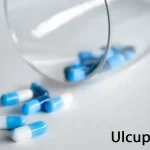
Eyedrops are the most commonly used treatment or medication to solve both small discomforts of our eyes, and potentially dangerous pathologies. Being very diverse and being able to include antibiotics or not, we must distinguish between 2 types of eye drops: those that need a prescription (i.e. medical prescription) and those that do not. In this article, we are going to talk about eye drops with or without a prescription for conjunctivitis and other problems.
Eye drops without a prescription
It is very normal to occasionally suffer small eye discomforts, such as red eyes or having a dry eye. These problems do not usually go beyond a certain itching, sensation of sand in the eye or dryness because our eyes do not secrete enough tears or because they are of poor quality.
In these cases, and provided that it is not a very intense or recurring problem, you can go to your trusted optician or to a pharmacy and ask them to give you some eye drops that, as you probably know, are a preparation in liquid form within a bottle so you can apply it, drop by drop, in the eyes.
Types of eye drops without a prescription
There are 2 large types of eye drops (eye drops) that can be acquired without the need for them to be prescribed by a physician through a prescription. That is, they are over the counter:
- Eyedrops for red eyes.
- Artificial tears
Let’s look at the differences between the two:
The former is used as a remedy for some irritation that is causing, mainly, redness, slight discomfort or itchy eyes. Normally, this occurs when your eyes have been exposed with too much intensity or longer due to the action of harmful external agents such as: tobacco smoke, air conditioning or chlorine from a pool.
On the contrary, artificial tears are moisturizing drops that are used to improve eye hydration that has been affected, for example, by the excessive use of electronic screens (computers, tablets, smartphones, video game consoles, etc.). With age, the quantity and / or quality of tears generated naturally by our eyes can decrease, so many people use these tears continuously, getting great relief.
Eye drops with a prescription
In addition to minor problems, eye drops can also be very effective for the treatment of inflammations or infections that, if not treated effectively, could seriously compromise our eyesight. These types of eye drops contain antibiotics to eliminate viruses and bacteria and, being a medication, require a prescription to be purchased at the pharmacy.
These eye drops for dry eyes, which as we have said need medical prescription, as well as the supervision and control of a specialist, are very effective, for example, for the treatment and cure of bacterial conjunctivitis.
Types of eye drops with antibiotics
The 3 most commonly used types of eye drop with antibiotics are: bactericides (eliminate bacteria), bacteriostatic (do not eliminate bacteria but prevent them from multiplying) and antibiotic combinations (combine antibiotics with steroids and other medications).



